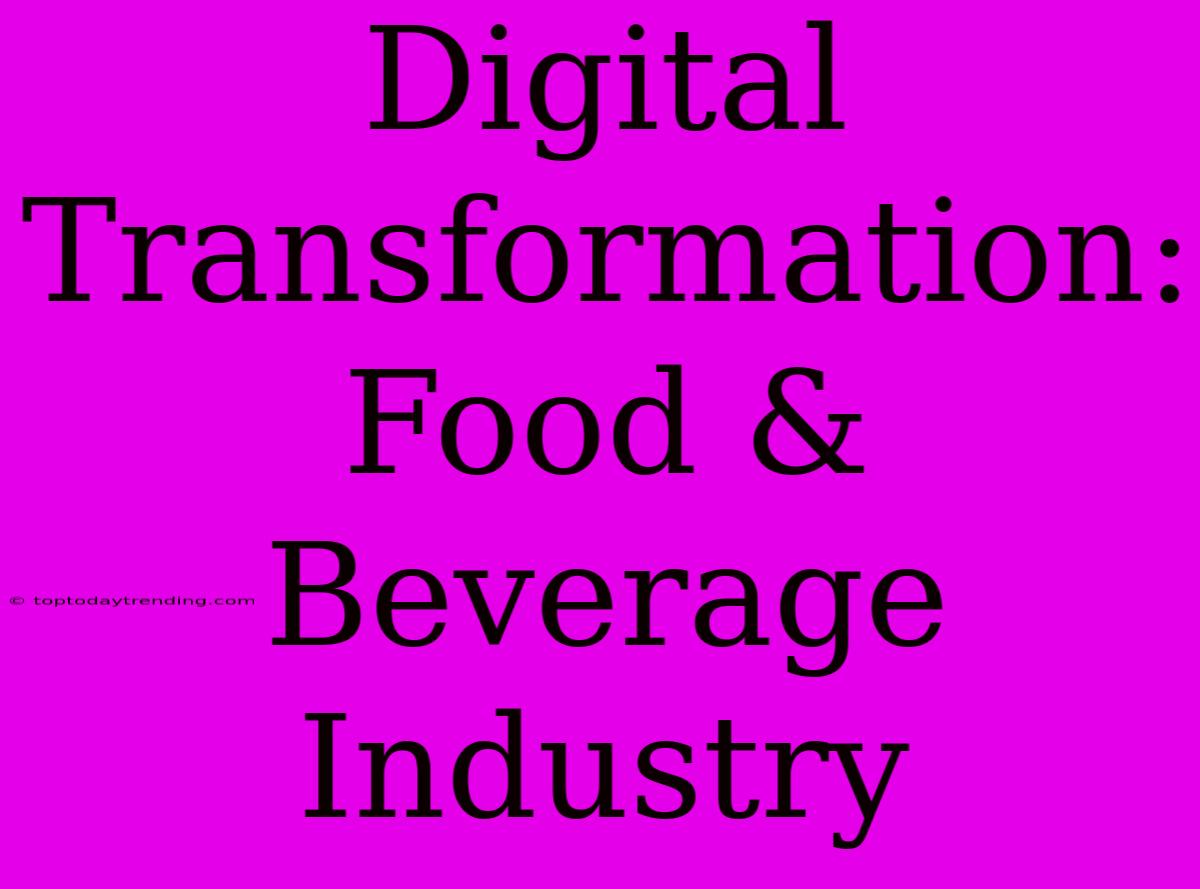Digital Transformation: Revolutionizing the Food & Beverage Industry
The food and beverage industry is undergoing a rapid digital transformation, driven by changing consumer habits, advancements in technology, and the need for greater efficiency and sustainability. This revolution is impacting every stage of the value chain, from farm to fork, and presenting both challenges and opportunities for businesses.
Key Drivers of Digital Transformation in F&B
1. Changing Consumer Preferences: Consumers are increasingly demanding convenience, transparency, and personalized experiences. They expect access to information about food sourcing, nutritional value, and production methods. This shift in consumer behavior is driving the adoption of digital solutions that offer these benefits.
2. Technological Advancements: Emerging technologies like Artificial Intelligence (AI), Internet of Things (IoT), blockchain, and big data are transforming how F&B companies operate. These technologies allow for greater automation, predictive analysis, supply chain optimization, and personalized customer engagement.
3. Growing Focus on Sustainability: Consumers are becoming increasingly aware of the environmental impact of the food industry. Digital solutions can help businesses track their carbon footprint, reduce waste, and improve resource efficiency, leading to a more sustainable food system.
Transformational Areas in the F&B Industry
1. Production and Agriculture:
- Precision Agriculture: Data-driven farming techniques like sensor-based monitoring, predictive analytics, and precision irrigation optimize resource use and improve crop yields.
- Automated Manufacturing: Robots and automation are increasing efficiency and reducing labor costs in food processing plants.
- Traceability and Transparency: Blockchain technology enables transparent and tamper-proof tracking of food products from farm to consumer, building trust and confidence in the supply chain.
2. Supply Chain Management:
- Real-time Inventory Management: IoT sensors and data analytics provide real-time visibility into inventory levels, reducing waste and optimizing stock management.
- Optimized Logistics: Advanced routing algorithms and predictive analytics streamline transportation and delivery, ensuring timely and efficient distribution of food products.
- Supply Chain Collaboration: Digital platforms facilitate collaboration among various stakeholders, improving communication and coordination across the supply chain.
3. Customer Engagement:
- Personalized Recommendations: AI-powered recommendation engines offer tailored product suggestions based on customer preferences and past purchases.
- E-commerce and Online Ordering: Digital platforms enable convenient online ordering and delivery services, meeting the demand for convenient shopping experiences.
- Direct-to-Consumer (D2C) Marketing: Brands are bypassing traditional distribution channels and connecting directly with consumers through social media, e-commerce, and personalized marketing campaigns.
4. Sustainability and Environmental Impact:
- Waste Reduction: Digital solutions help track food waste at various stages, enabling businesses to implement strategies for minimizing waste and promoting responsible consumption.
- Sustainable Packaging: Technologies like smart packaging and biodegradable materials are being developed to reduce environmental impact.
- Carbon Footprint Tracking: Digital tools allow businesses to measure and monitor their carbon footprint, enabling them to identify areas for improvement and implement sustainable practices.
Challenges and Opportunities of Digital Transformation
Challenges:
- High Initial Investment: Implementing digital technologies can require significant investment in infrastructure, software, and training.
- Data Security and Privacy: Managing large datasets and ensuring data security and privacy is crucial for building trust with consumers.
- Adapting to Change: Adopting new technologies and changing work processes requires adaptability and agility from employees.
Opportunities:
- Enhanced Efficiency and Productivity: Automation, data-driven decision making, and optimized processes increase efficiency and productivity, leading to cost savings and higher profitability.
- Improved Customer Experiences: Personalized recommendations, convenient online ordering, and transparent information enhance customer satisfaction and loyalty.
- Sustainable Practices and Environmental Responsibility: Digital solutions enable businesses to operate more sustainably, reduce their environmental impact, and contribute to a more responsible food system.
Conclusion
The digital transformation of the food and beverage industry is reshaping the entire value chain. By embracing technology and adopting innovative solutions, F&B businesses can gain a competitive advantage, meet evolving consumer demands, and contribute to a more sustainable food system. The future of food is digital, and businesses that adapt to this new landscape will thrive in the evolving marketplace.

